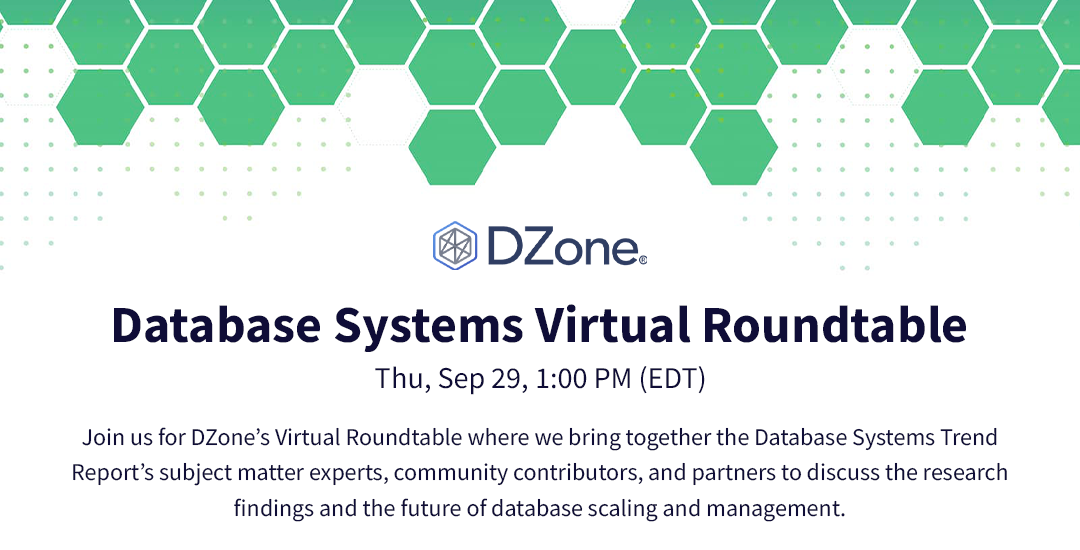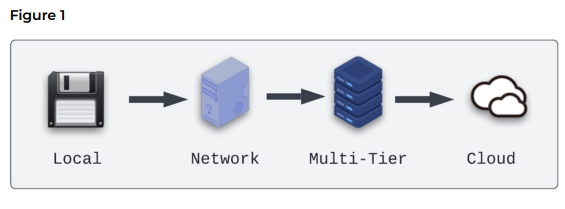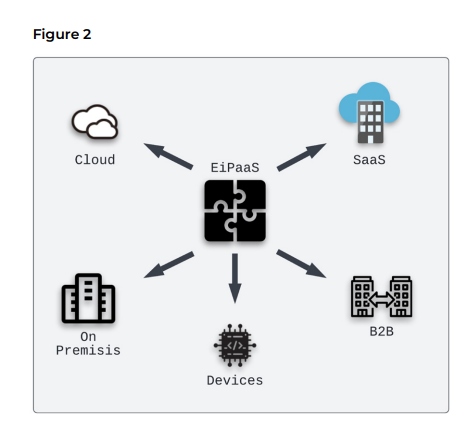The Importance of EiPaaS
This high-level overview of EiPaaS helps technologists understand the value of utilizing a platform architecture focused on enterprise integration.
Join the DZone community and get the full member experience.
Join For FreeThis is an article from DZone's 2022 Enterprise Application Integration Trend Report.
For more:
Read the Report

In 1993, I started working in the Group Insurance division of a medium-sized insurance company. The products sold by this division were made available to life insurance agents via a locally executed application written in the Pascal programming language. Those agents placed the disk into their computer and launched an MS-DOS executable, which started a character-based application focused on generating new policy sales.
Our team would create and validate the program before floppy disks were created and physically distributed to the agents using the application. A few years later, that same application was served via a network operating system (NOS) — getting rid of the need to distribute floppy disks and paving the way for faster updates. As the technology evolved, those NOS-driven solutions were replaced with multi-tier applications still hosted in locally managed data centers. Today, those very same applications have been transformed into cloud-based applications and services.
The illustration in Figure 1 demonstrates the evolution of applications over the last 30 years. That "cloud" container is the product of learned lessons and best practices that have emerged from every prior iteration as applications have evolved. Former silos of proprietary information or functionality have become standards-based services that can provide a great impact to those who are allowed access.

With applications, infrastructure, services, and data-focused aspects finding their way to become some "aaS" (as-a-service) offering, the next area of focus should be on enterprise integrations — or enterprise integration platform as a service (EiPaaS).
The goal of this article is to provide a high-level overview of EiPaaS and help technologists understand the value that can be realized when utilizing a platform architecture focused on enterprise integration.
What Is EiPaaS?
Gartner defines EiPaaS as:
"A combination of integration technology functionalities that are delivered as a suite of cloud services and designed to support enterprise-class integration initiatives."
At the 10,000-foot level, EiPaaS fits into the enterprise landscape as shown in Figure 2 below.

Like all integration services, EiPaaS resides at the center of the implementation with the appropriate level of access to all source and target systems, services, platforms, and devices participating in the integrations.
Unlike traditional integration services, the enterprise-integration-platform-as-a-service architecture employs a control plane and data plane, as shown in Figure 3 below:
- Control plane – focuses on the integration logic, identity/access management (IAM), marketplace solutions for community adoption, governance, reporting, and observability.
- Data plane – leverages an API gateway to enforce policies, configurations, and integration logic. Captures logs, metrics, and tracing data for reporting and observability needs.

Integration Logic includes code-driven designs along with no-code and low-code solutions. The goal is to allow feature and service teams to use the approach that makes the best sense for their requirements, budget, environmental needs, and acceptance criteria. Additionally, CI/CD pipelines are leveraged to deliver improved products and services programmatically. The deployment of new features and functionality can be planned and scheduled — or delivered automatically, if desired.
Where EiPaaS Provides Value
To understand how the EiPaaS architecture provides value, consider the following implementation:

Feature or service teams with integration needs make their connection to the EiPaaS. They can leverage integration functionality via published marketplace solutions, pre-defined connections, or by calling integration logic, which resides inside the control plane. Policies and roles work in tandem with IAM to enforce security.
Inbound requests pass through the control pane to the data plane, which is governed by purpose-driven gateways that further restrict access and provide source-of-truth connectivity to the integrated systems. In this case, the implementation includes an on-site data center, private cloud presence, and public cloud solutions.
Logging, tracing, and metrics provide observability of the platform via the control plane — along with business intelligence and reporting functionality.
The EiPaaS architecture provides value in several ways:
- Connectivity to internal and external integration nodes are centralized, open, and easy to maintain.
- The entire process is driven by optimized cloud-based standards:
- High speed
- Scalability
- Security
- Observability
- Ease of collaboration
- Cost efficiency
- Unlimited storage capacity
- Fast deployments
- Multi-zone adoption
- Data loss prevention
- Competitive edge
- CI/CD adoption enforces a declarative and programmatic design and deployment strategy.
- It fosters a composite enterprise by leveraging a decentralized architecture.
Because integration needs are equally as important as the intellectual property found in enterprise applications, well-designed EiPaaS implementations pave the way for organizations' success. Some examples include:
- Feature teams can interface directly with the EiPaaS and avoid proprietary connections.
- New initiatives, programs, and groups can be on-boarded with far less because of defined standards.
- New initiatives, programs, and groups can be on-boarded with far less because of defined standards.
Conclusion
Starting in 2021, I have been trying to live by the following mission statement, which I feel can apply to any IT professional:
"Focus your time on delivering features/functionality that extend the value of your intellectual property. Leverage frameworks, products, and services for everything else." – J. Vester
The EiPaaS architecture builds upon the benefits of cloud-based applications, platforms, and services. In taking this approach, EiPaaS leverages existing technologies and avoids trying to reinvent the wheel. EiPaaS also provides an opportunity for a single path to the system of record. In taking this approach, EiPaaS solutions inherently avoid duplication of program logic — adhering to a DRY (don't repeat yourself) approach. In both cases, the EiPaaS architecture adheres to my personal mission statement.
For those interested in EiPaaS, the following is a list of vendors who are considered leaders in this space — based both on my personal experience and a quick peek at the Gartner Magic Quadrant for Enterprise Platform as a Service (September 2021):
- Informatica Intelligent Cloud Services (IICS)
- Boomi AtomSphere Platform
- Workato Workspace
- SAP Integration Suite
- MuleSoft Anypoint Platform
- Oracle Integration (plus companion products)
- Microsoft Azure Integration Services (AIS)
- TIBCO Cloud Integration
When I think back to the Pascal-based application that was the source of my employment in 1993, I fully appreciate the evolution that applications have endured to find themselves now running in a cloud-driven era. It only makes sense for the integration layer employed by the enterprise to utilize a similar design. The EiPaaS architecture meets that very requirement while leveraging proven design patterns along the way.
Have a really great day!
This is an article from DZone's 2022 Enterprise Application Integration Trend Report.
For more:
Read the Report
Opinions expressed by DZone contributors are their own.

Comments